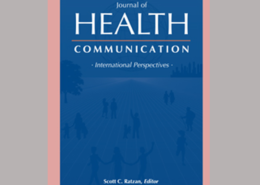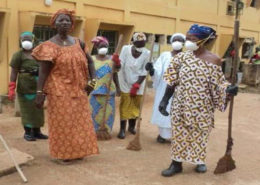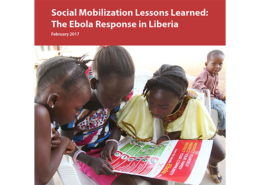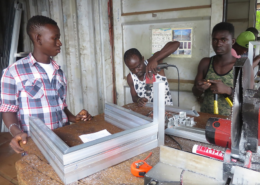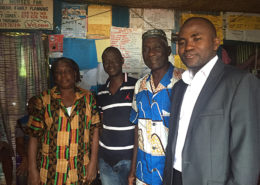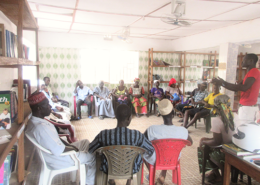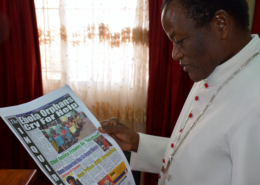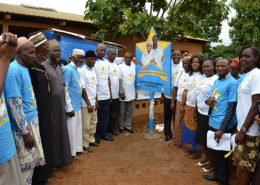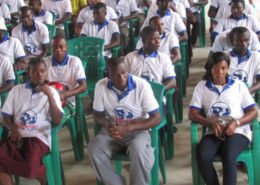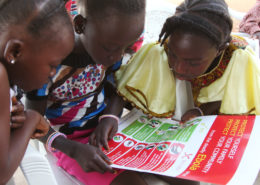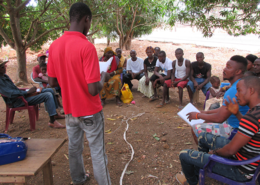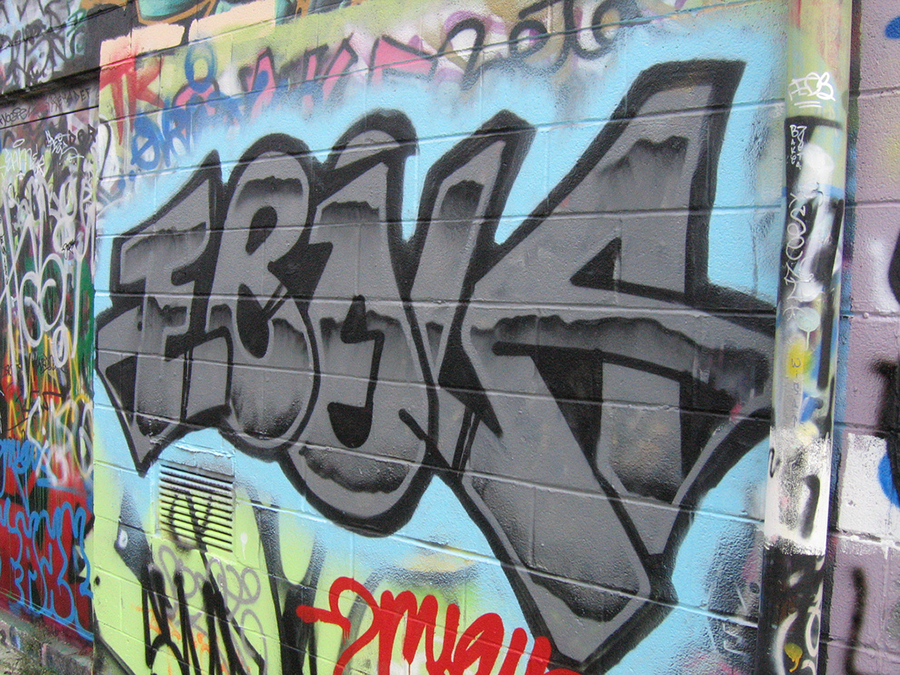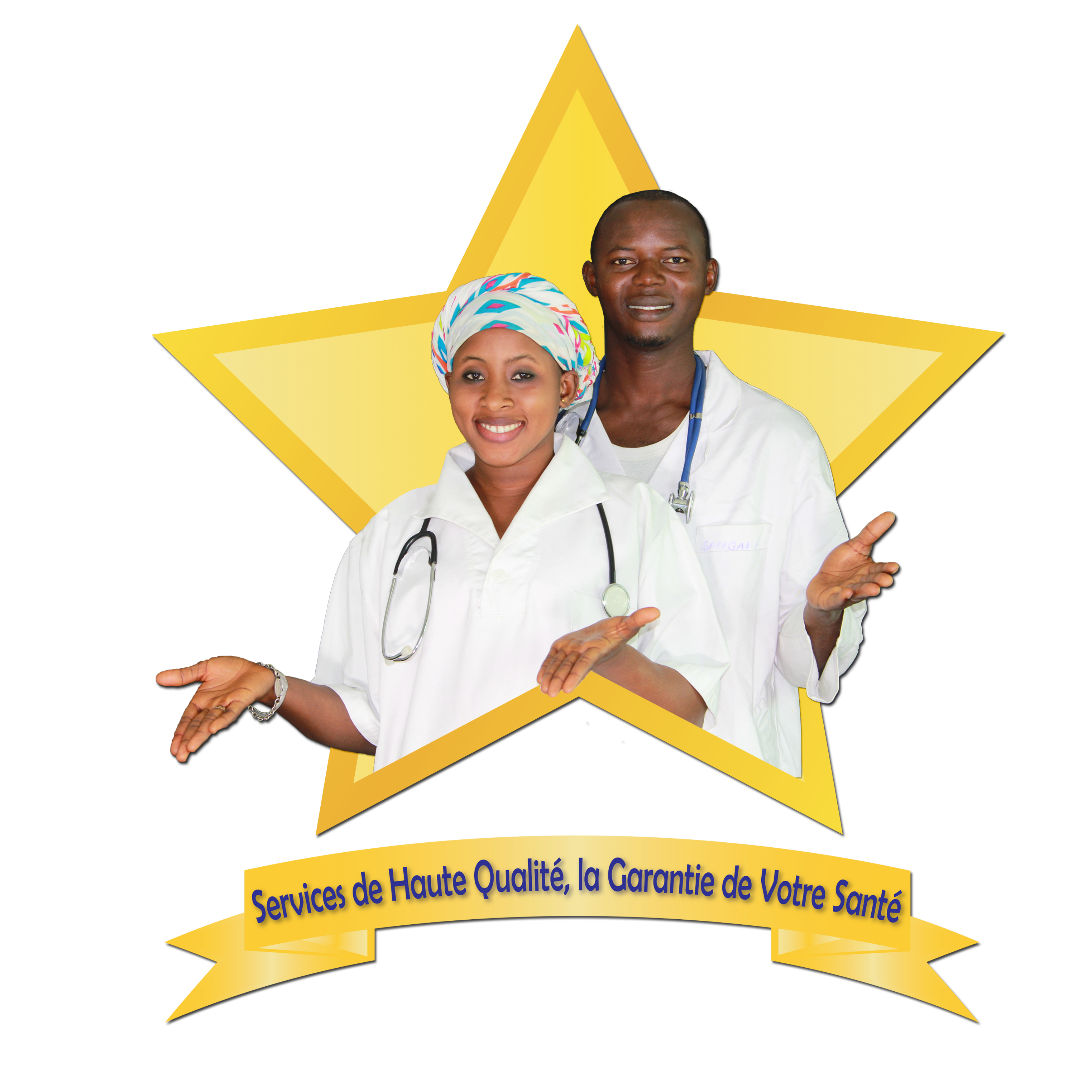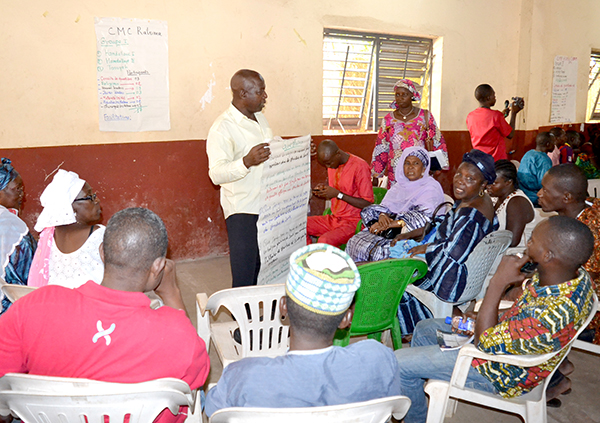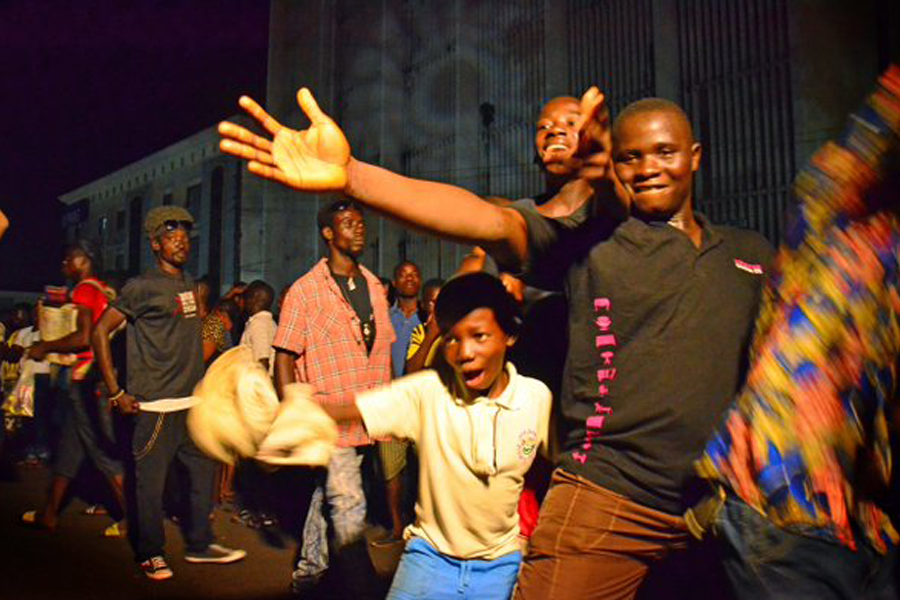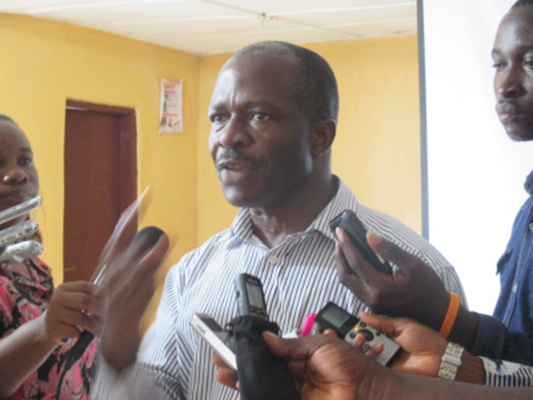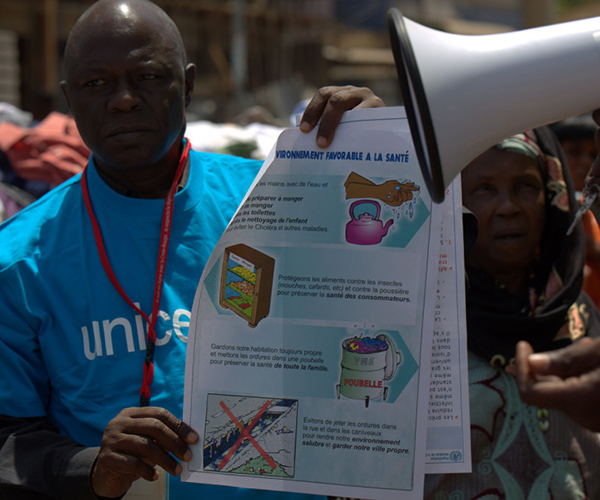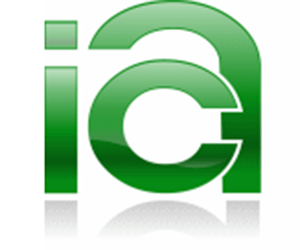
As the Ebola outbreak intensified in West Africa, it became clear that a clinical response alone would not be enough to turn the tide of the epidemic. Community-based health workers, national ministries of health in affected countries and international partners realized that social and behavioral change communication (SBCC) activities were needed to increase awareness about transmission of the disease, encourage preventative behaviors by individuals and families and alter social practices and traditions such as how communities bury and honor their dead.
The thousands of lives taken by Ebola virus disease (EVD) was a devastating loss, but the outbreak also had a considerable impact on the already weak health systems in the hardest hit countries – Liberia, Sierra Leone and Guinea, also known as the Mano River Region countries. Scores of health workers died from Ebola, trust in the health system eroded and with the scarce resources all directed toward stopping the EVD outbreak, routine and even emergency health services were left unsupported and in some places completely unavailable.
With an existing strong relationship with the Ministry of Health in Liberia and the support of USAID, HC3 mobilized quickly to support coordination of Ebola response efforts, training for community-based health workers and urgent messaging for the Liberian people. The scale of the devastation caused by the EVD outbreak pointed to the need for recovery and rebuilding activities to continue long after the Mano River Region countries were declared free of the disease. To this end, HC3 implemented a variety of activities in all three countries to restore health services, strengthen the health system, rebuild the link between facilities and communities and reinforce healthy behaviors by individuals and families.
HC3 helped to initiate a health systems “restart” in West Africa to respond to Ebola, prepare for future public health crises and increase key health-seeking behaviors, including service utilization.
Responding to the Epidemic
Getting out critical messages – During the Ebola crisis, the HC3 team in Liberia played a role in ensuring the Liberian people received the information needed to protect themselves from Ebola and stop the spread of the disease. HC3’s work included developing messages and materials, coordinating the airing of messages on community radio stations and leading efforts to quickly develop and broadcast messages about prevention and vigilance during the multiple EVD flare-ups.
Coordination and capacity strengthening with Ministries of Health – HC3 engaged various working groups and divisions and across multiple levels of the ministries of health in the Mano River countries. During the Ebola crisis, HC3 played a pivotal role in helping to establish and coordinate the Message Materials Design (MMD) working group, which ensured all Ebola related communication was correct, consistent and harmonized and took a leadership role in the research and evaluation working group. HC3 supported coordination and capacity strengthening of the National Health Promotion Division, which played a critical role during the Ebola crisis as well as provides assistance to the MMD.
Sharing and promoting effective use of materials and resources – With many international, regional, national and local partners all working to stop the Ebola outbreak, there was a flood of messages and materials developed and disseminated in the Mano River countries. HC3 played a central role in disseminating lifesaving information by developing the Ebola Communication Network (ECN) to facilitate sharing of resources and communication materials among partners on the ground and those involved in the response and recovery from afar.
Effective Research for intervention design and future planning – HC3 conducted and contributed to research activities which revealed important insights about knowledge of Ebola transmission and prevention, trusted sources of Ebola-related information, health behaviors at home, health-seeking practices and trust in the health system. These insights provided guidance to SBCC efforts of HC3 and other partners during the crisis, and have also revealed the impact of communication during and post-outbreak which can be used to inform how future outbreaks are handled.
Preparing for Future Health Crisis
Learning from the crisis – Throughout response and recovery efforts, HC3 diligently documented lessons learned from HC3’s activities as well as from the overall response and recovery. These efforts culminated in a number of resources, including a digital documentation resource, Ebola: A Behavior-Driven Crisis, that highlights how SBCC played a crucial role in stemming the Ebola outbreak in Liberia. The Crisis Communication: Lessons in Risk Communication study by George Washington University explores how well the media communicated about Ebola and how it was interpreted by and responded to by Liberians. HC3 also partnered with UNICEF to produce an Ebola Supplement for International Journal of Health Communication.
Ebola and Emergency Communication – During the Ebola outbreak, HC3 developed the Ebola Preparedness Communication Implementation Kit (I-Kit), to assist countries in their response to the outbreak. With the lack of similar resources for other types of emergencies, HC3 also developed a broader SBCC for Emergency Preparedness I-Kit which provides guidance on how to navigate an SBCC response at all stages of an emergency. In Cote d’Ivoire and Guinea Bissau, HC3 provided direct support to ensure preparedness in the event of an Ebola or other disease outbreak and built capacity of the governments to design, implement and evaluate effective health communication to deal with disease outbreaks and improve health outcomes.
Increasing uptake of healthy practices and service utilization
Increasing uptake of services at facilities – Because health facilities became sites for treatment of Ebola patients, many of whom never returned home as the disease took their lives, people due for routine services or in need of non-Ebola health care became fearful of attending a health facility. To address the erosion of trust in health services and decline in facility attendance, HC3 took a multi-faceted approach which included improving the quality of services, strengthening the link between communities and their local facilities and increasing awareness of the importance of going to the facility for routine services and treatment of common illnesses. Across all three Mano River Region countries, HC3 focused in particular on reproductive, maternal, newborn and child health (RMNCH) services.
Engaging communities – Social mobilization and community engagement played an enormous role in curbing the Ebola outbreak. During the height of the outbreak in Liberia, HC3 adapted the community engagement tool, Bridges of Hope, to raise awareness and stimulate action in communities. This tool has since been adapted to engage communities on a variety of health and social issues, and activities in Sierra Leone and Guinea engaged families, community leaders, community volunteers and community-based health workers to take control over health in their community.
For further information on the activities in the countries where HC3 has been doing response, recovery, rebuilding and preparedness work, see the country pages for: Liberia, Sierra Leone, Guinea, Guinea Bissau and Cote d’Ivoire.

